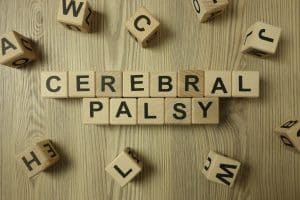The Long-Term Prognosis of Cerebral Palsy
 Cerebral palsy (CP) is a condition that can affect a person for the rest of their life. While the condition itself will not worsen, the symptoms and risks associated with this disorder can become worse over time, causing individuals to develop long-term complications. As a result, many children with cerebral palsy may experience chronic pain, respiratory illnesses, pneumonia, shorter life expectancy, and more as they enter adulthood.
Cerebral palsy (CP) is a condition that can affect a person for the rest of their life. While the condition itself will not worsen, the symptoms and risks associated with this disorder can become worse over time, causing individuals to develop long-term complications. As a result, many children with cerebral palsy may experience chronic pain, respiratory illnesses, pneumonia, shorter life expectancy, and more as they enter adulthood.
What is cerebral palsy?
According to the Centers for Disease Control and Prevention (CDC) cerebral palsy is defined as “a group of disorders that affect a person’s ability to move and maintain balance and posture.” Unfortunately, cerebral palsy is the most common type of motor disability among children. The CDC states that cerebral palsy arises when there is “abnormal brain development or damage to the developing brain that affects a person’s ability to control his or her muscles.” This usually occurs when young children and infants experience any type of damage to their brains, which often happens right before, during, or after birth, categorizing it as a birth injury.
What are some symptoms that may indicate a child has cerebral palsy?
Because cerebral palsy can vary in severity and type, the symptoms can also vary. Some children may present with only one or two mild symptoms; others may present with significantly more. The more common symptoms, per the Mayo Clinic, include:
- Muscle stiffness
- Involuntary body and muscle movements
- Inability to walk or problems with walking
- Inability to balance
- Speech issues
- Inability to speak
- Inability to swallow, chew, or eat
- Constant drooling
- Learning problems
- Inability to hear or hearing loss
- Seizures
- Vision issues or blindness
- Rapid eye movements
- Mental health problems
The risks associated with CP for adults
Research published in 2019 found that “adults with CP manifest a higher rate of chronic health conditions and eventual decline in strength and functional reserve, deterioration in physical activity, increased risk of musculoskeletal complications, and gradual changes in swallowing ability,” and may face additional challenges when it comes to social engagement and quality of life. Aside from whatever challenges may arise from cognitive and/or mobility difficulties, they also face a greater risk of certain diseases and conditions:
Health challenges diagnosed in adults with CP differ from those in childhood and adolescence in patients with CP. Individuals with CP manifest an increased risk of death due to cancer including breast cancer and cancers of digestive and genitourinary organs… Adults with CP have been additionally diagnosed with chronic pain and fatigue, osteoarthritis and osteoporosis, and an overall reduction in mobility.
The research also reports that the “hospitalization rate was 9-fold higher” for adults with complex disabilities like CP “than that of adults without disability.”
Adults with CP may also have higher rates of “chronic conditions such as diabetes, asthma, hypertension, other heart conditions, stroke, and emphysema than adults without CP,” all of which can affect overall health and life expectancy rates. So, too, can dysphagia (difficulty swallowing), as adults “may experience gradual deterioration in their swallowing and mealtime capabilities.” They may also suffer malnutrition as a result of the dysphagia.
Finally, the research found that adults living with CP often suffer fatigue and chronic pain:
[A]dults with CP aged below 50 years frequently reported cervical pain, back pain, muscle pain, joint pain, hand paresthesia, and overuse syndrome. A study demonstrating a 10-year long-term deterioration of perceived health and functioning found that pain and fatigue were the most common health challenges faced by adults with CP. Another study revealed chronic pain (lasting more than 3 months) in 75% of the adults diagnosed with CP. Multiple studies revealed that the back, hip, and the lower limbs were the most common pain locations in adults with CP. Adults with CP also manifested pain associated with contractures, orthopedic deformities, fractures, pressure from sitting on bony prominences, as well as spasticity.
[…]
Cervical myelopathy is often induced by early degeneration of the cervical spine due to abnormal movements in adults with CP especially in adults with dyskinetic CP. Surgical intervention has also been used to reduce exacerbation of weakness and paresthesia. The surgical outcome was not as favorable as expected most likely due to continued and persistent neck movements after surgery.
As you can see, cerebral palsy is not “just” a collection of mobility disorders. While the condition itself doesn’t worsen, it can affect every other part of a person’s life. Adults with severe CP who do not have access to the health services they need, either because of lack of familial support or lack of funding, may be at greatest risk.
What is the life expectancy for individuals with cerebral palsy?
It depends. According to a study released by BioMed Central Ltd., in 2019, the milder the disorder and impairments are, the higher chance that individuals with cerebral palsy have of surviving and living long lives. Researchers studied over 3,000 people who were born in Australia between 1956 to 2011 with cerebral palsy. The results of the study were:
- 22 percent with very mild symptoms and impairments had a similar life expectancy close to the general population (Around 58 years old).
- Of those who died, about 59 percent was due to respiratory illnesses, 49 percent was due to pneumonia, and 45 percent was due to aspiration.
- After 1990, most individuals did not die with cerebral palsy until early adulthood.
Why you should call a lawyer if your child is diagnosed with cerebral palsy
If you find out that your child has cerebral palsy, you most likely have a long and difficult road ahead of you. As your child grows, certain things will become more challenging for them. Therefore, if you believe that your child’s cerebral palsy is the result of negligence, it may be time to start thinking about taking legal action against the responsible party. Your attorney will listen to your child’s experience, go over your potential legal options, and file a lawsuit against the defendant to ensure that your child receives the necessary care that they need and deserve for the rest of their life.
Please contact Paulson & Nace, PLLC through this contact form or by calling our office.

Samantha L. Peters, a lawyer specializing in medical malpractice and personal injury, joined Paulson & Nace, PLLC in 2022. She previously established a medical malpractice section at a Maryland firm. Licensed in Maryland and DC, she was listed in The National Trial Lawyers: Top 40 Under 40 and Top 100 Medical Malpractice Verdicts.
